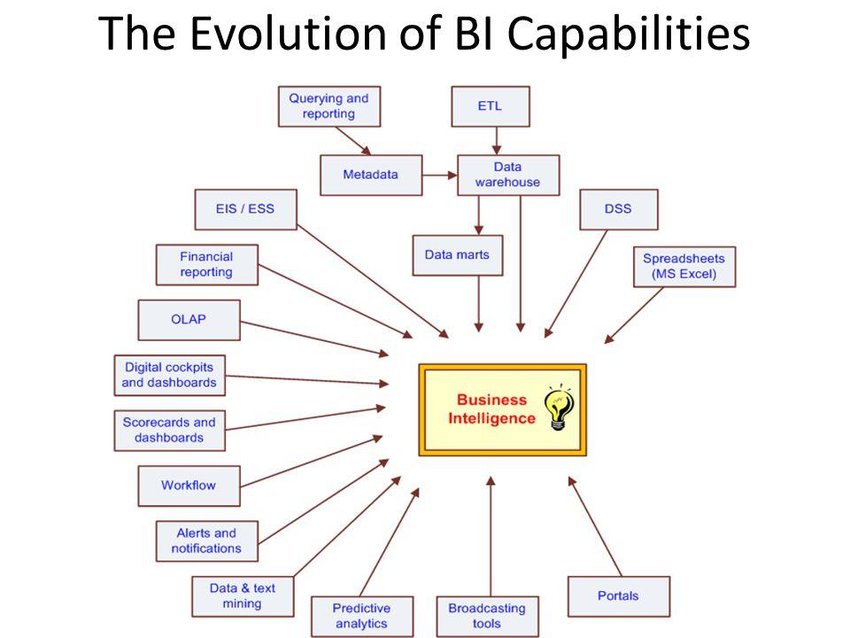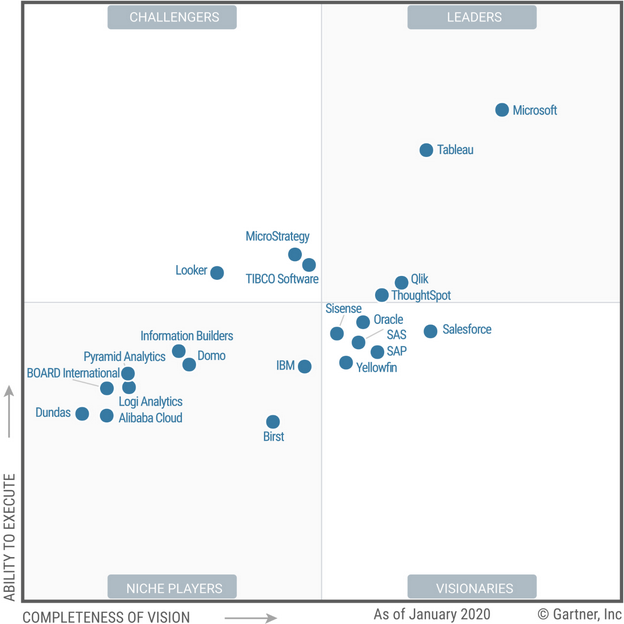Early this year, I applied to study for a part-time course at one of the polytechnics in Singapore, and I received the offer letter recently. I applied for two courses, and the one I got offered is called Specialized Diploma in Business Intelligence and Analytics. Just before I start my school life again, I want to make myself clear with the terms used in my course. For the first semester, I will be studying Business Intelligence and the next semester; I will be studying Business Analytics.
What is Business Intelligence (BI)?
- BI systems are used to maintain, optimize and streamline current operations.
- It is to support data-driven business decision making.
- It collects data from multiple sources to more complex Big Data centers, integrates into data warehouses, analyzes through the ETL (extract, transform and load) procedures and presents the business information using reports and dashboard (data visualization).
- Use historical and current data.
During a casual conversation with a colleague of mine, he said that he created a lot of SSIS packages to perform our ETL (Extract, Transform, Load) work, and he added that 95% of his time was doing ETL works. The remaining 5% of the time was doing a Power BI dashboard. He found it “funny” that the job description advertized as BI Developer and his work is mainly working on ETL. His friend, who works as a BI Developer, does not need to do ETL works because they have a Data Engineer team. He sounded as if the job title or job description misled him to work as a BI Developer in his company. I further probed him, and I found that he interested to do dashboards instead of ETL.
Furthermore, he thinks doing dashboards is BI Developer’s primary task. That explained why he said “funny” that his role needs him to do ETL, and not doing dashboard. Back to my topic, based on my understanding, ETL and dashboard are both parts of Business Intelligence. There are no “funny” elements claimed by my colleague. Just that, if a company has a big team of a data engineering team and data analyst team, the tasks can be divided into two main parts, the data engineers work on the ETL, and the data analyst works on the dashboards. I searched online for more information, and summarize the above four points as the main elements for Business Intelligence.
Business Intelligence offers reports and analytics
To support the data-driven business decision making, Business Intelligence helps users by providing them with the business insights in the form of reports and visualizations using the historical and current data. The data analyst uses business analytics tools to explore and generate meaningful information from the given cleaned data. Analytics is the process of examining data and reports to extract useful insights. It offers users a “why” and “how”, interpreting the “what” of the data given by the reporting. Meanwhile, Reporting is organizing data into informational summaries to monitor how different areas of a business performing. It gathers data and delivers it in a digestible format, for example in a table listing format in the Excel file, or charts for summarized visualizations. Most BI tools use online analytical processing (OLAP) to perform sophisticated, multi-dimensional, drill-down analysis. Example tools are QlikView, SAP BusinessObject, Microsoft Power BI, just to name a few.
What is Business Analytics?
- It collects and analyzes data, employs predictive analytics and generates richly visualized report in custom dashboards.
- The main objective is to help identify and address an organization’s weak points.
- Also, use historical and current data.
- Utilized statistical analysis, data mining and quantitative analysis to identify the past business trend.
What does Business Analytics offer?
Rather than say, “Who was my top 10 customers last year,” use statistically validated information to say, “Based on historical…trends, these are the people who are positioned to be our top 10 customers next year.”
https://selecthub.com/business-intelligence/business-intelligence-vs-business-analytics/
One of the most powerful aspects of Business Analytics is ad-hoc reporting which allows organizations to perform analysis of specified data in real-time to answer targeted questions to make quicker business decisions. Business Analytics uses predictive analysis to solve problems before they have occurred. Popular software is SAP Business Analytics Suite, Tableau Big Data Analytics, SAS Enterprise Miner, to name a few.
Evolution of Business Intelligence
Below diagram shows the evolution of different Business Intelligence’s capabilities.
Business Intelligence started as standard reports in the 1990s. Then, it introduced the drag and drop reports and dashboards features in the 2000s, and now, in the 2020s, we are advancing in real-time, interactive visual interfaces. In recent years, data became a big thing, and adoption of cloud computing and interactive dashboards make Business Intelligence and Business Analytics become more important to businesses. It helps users to identify patterns in the organization’s data and provide insights to capitalize on potential growth in the organization.
The modern Business Intelligence and data management start to look into modernizing their analytics platforms by starting adopting the concept of data lakes, data governance, metadata and security.
Magic Quadrant for 2020 for Analytics and Business Intelligence tools
Image: https://www.analyticsvidhya.com/blog/2020/02/gartners-2020-magic-quadrant-bi-analytics-tools/
What is reporting?
Reporting is the process of organizing data into informational summaries to monitor how different areas of an organization are performing. Reporting helps companies monitor their online business, and know when data falls outside of expected ranges. Good reporting should raise questions about the business from its end users. Reporting shows you what has happened, while analysis focuses on explaining why it happened and what you can do about it.
Summary
Business Intelligence plays a significant role in the AI-driven world, and it is important for predictive abilities. The future of Business Intelligence would look more automated and heavily used. With the introduction of Data Science and AI, it leverages the full power of predictive & prescriptive (what action to take) analytics. As a data-driven Data Engineer, I always keep learning and sharing my updated contents to the communities and get feedback to improve my skills.
References:
Images are taken from vectorstock.com and
https://selecthub.com/business-intelligence/business-intelligence-vs-business-analytics/
Evolution of Business Intelligence, https://medium.com/datadriveninvestor/the-evolution-of-business-intelligence-2016-to-now-48e19c2df5b4
Evolution of Analytics with Data, https://towardsdatascience.com/the-evolution-of-analytics-with-data-8b9908deadd7
Discover more from LiYenzWordPress
Subscribe to get the latest posts sent to your email.




